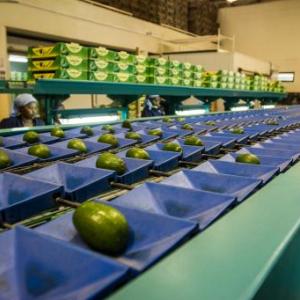How Does The Enabling Environment Drive Animal Source Food Market System Success?
Image

Successful animal source food (ASF) market systems present tremendous opportunities for Feed the Future countries to achieve economic growth, resilience, inclusiveness, and improved nutrition. However, like all complex market systems, there are numerous interconnected issues at play that will shape whether potential translates into impact.
The enabling environment for ASFs is distinct from crop market systems, given the unique needs of different animal species and the factors that will either facilitate or impede access to specialized products and services. Therefore, it is necessary to examine the factors in the enabling environment that support successful outcomes in ASF systems.
What can Liebig’s law teach us about the enabling environment for market systems?
Liebig’s law can tell us a lot about what drives performance of market systems. Although developed by agricultural scientists to understand production system performance, the principle has broader applications, particularly as it relates to the enabling environment. In essence, Liebig says that performance will be dictated by the scarcest resource, not the most abundant. In other words, a system is only as strong as its weakest link.
If resources are put into a system without considering and addressing what is missing — and why weak links exist — then the outcome is unlikely to meet more optimistic expectations. Importantly, if certain conditions in the enabling environment are not improved, weak links will persist despite allocation of more abundant resources, and system performance will fail to meet potential.
How can we identify these weak links in the enabling environment?
With these realities in mind, the EEFS project set out to identify a set of factors in the enabling environment that will support or impede successful outcomes in ASF market systems based on practical evidence from across various market contexts. The result is an analytical guidance document that identifies factors in the enabling environment that support ASF market system success, and informs the design of customized field-based enabling environment analysis for ASF systems. Identifying and understanding the drivers of these factors in a country will aid USAID Mission decision-making, particularly in terms of identifying where investments in improving the enabling environment for ASF market systems are expected to yield positive impacts.
What do we mean by successful outcomes?
Before diving into a summary of EEFS’ findings, it is important to clarify what is meant by “successful” outcomes. The framework does not suggest that all of the factors identified must be present before a successful outcome can be achieved, nor does it suggest that the list of factors identified is exhaustive.
There will be context-specific considerations from country to country that are not explicitly covered in the guidance document, such as the informal or traditional norms that influence the political economy. And, naturally, success should be viewed along a spectrum, where greater or lesser impact may be achieved depending on various contextual factors. Further, success is iterative, and continual improvements can be achieved over time. Overall, however, the targeted outcomes considered to be successful for USAID and policymakers are rural income growth, private sector investment, systemic resilience, and improved local nutrition.
What are the factors that enable ASF system success?
Based on a comprehensive literature review, the EEFS project has organized the enabling environment factors for ASF market system success into the following three categories:
- Supply-side factors are those that influence the production of ASFs. This category considers what drives the quality, availability, and access to animal feed, animal genetics, animal health products and services, labor, land, and water.
- Marketing factors are those that influence consumer demand and the ability of producers to safely and efficiently meet end-market demand. This category covers trade facilitation factors such as infrastructure, price transmission, sanitary and phytosanitary (SPS) requirements, and trade agreements. The category also discusses the factors that influence local market demand dynamics and domestic food safety control systems.
- Financial services factors are those that mitigate risks and increase liquidity to incentivize uptake of improved technologies and practices. This category covers factors that influence access and availability of credit and insurance products/services in ASF market systems.
Following this first installment, EEFS will be sharing three additional online articles, each of which will address one of the three categories of factors above. In the meantime, you can access the full report and an abbreviated technical learning note.
Stay tuned, and we look forward to any feedback or questions you may have about EEFS’ work.
The Feed the Future Enabling Environment for Food Security (EEFS) project is a pre-competed Blanket Purchase Agreement (BPA) for USAID Missions and Operating Units to access evidence-based analysis of how legal/regulatory and institutional factors influence agricultural market system performance, food security, and nutritional outcomes. For further information on how USAID can access EEFS expertise, please contact the Chief of Party, Adam Keatts at akeatts@fintrac.com.


